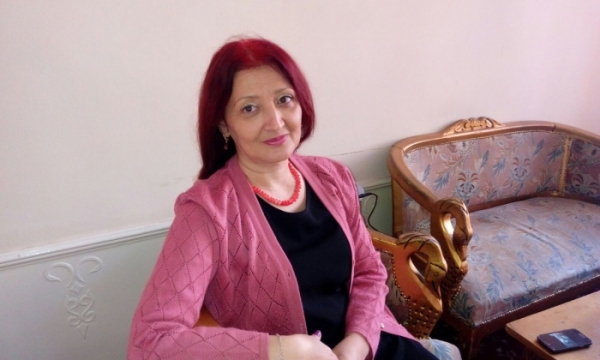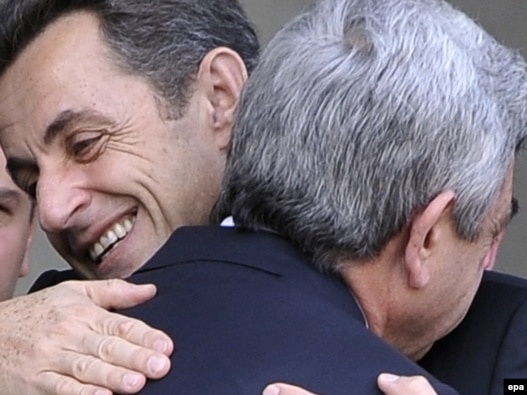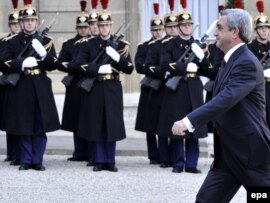Tamilla Musayeva,
Doctor of history, professor
Adil Mammadov, Doctor of history
It’s already ten years since our nation has commenced building its sovereign state being in utterly difficult situation and surpassing incredible obstacles. Looking back to the passed way we observe both errors, shortcomings and those great achievements which were possible exclusively in terms of the independence. Among such achievements there is opportunity to see our nation’s history in new light, form objective approach to historical course of its evolution, reveal obscure pages of history, give proper, unbiased appraisal to its individual periods and events having been distorted, forged or just hushed up for long decades. One of the pages is March events of 1918 that were presented in soviet historiography as “civil war”, “musavatists’ counter-revolutionary rebellion” being allegedly provoked by “Musavat” party’s members with aim of overthrowing soviet regime in Baku. In present-day times owing to efforts of azerbaijani social scientists who found and analysed most archive documents being earlier thoroughly concealed, and also owing to current democratic processes in Azerbaijan there was created condition for public declaring the whole truth about the March events, qualifying them as genocide over Azerbaijanis, list the main ringleaders of this bloody massacre. February revolution and following October events, publication of such documents as “Declaration of russian nations’ rights” and “Appeal to moslem working people of Russia and East” were taken by Azerbaijan nation, intellectuals, national parties for opportunity of realizing “national autonomy within Russian Federation” idea.
“Musavat” party that appeared at the respective period on political struggle’s proscenium advanced “Azerbaijan’s autonomy” idea as one of the paramount programme demands. But provisional extraordinary commissar on Caucasian affairs, S.Shaumyan was ardent antagonist of the idea. He considered azerbaijani nation’s legitimate and natural demand of granting Azerbaijan an autonomy as “dream of azerbaijani nationalists” to make Baku “capital of Azerbaijan khanate” (S.G.Shaumyan, Selected works. Moscow, 1978, II v., p.257). The paradox is that flatly refuting possibility of granting Azerbaijan an autonomy Shaumyan at the same time took for due plan of establishing Provisional armenian government at its territory occupied russian troops. Moreover realization of this plan in accordance with decree dated by December 29, 1917, signed by V.I.Lenin and I.V.Stalin was charged to Shaumyan. He was also commissioned with leading over determination of this “autonomy’s” bounds especially of adjoining moot areas (Decrees of Soviet government. Moscow, 1957, p. 289-299).
The bolshevist government was pretty aware of Shaumyan’s approaches to most clue points of bolshevist party’s national programme, his radically hostile attitude to such items as granting of autonomy, nations’ right to self-determination. As far back as 1914 Lenin expressed in his letter to Shaumyan critical attitude to these views. “It’s shame on russian marxist to hold standpoint of armenian hen-coop… Because of “armenian” blindness you become apprentice of Purishkevichs and their nationalism” (Lenin V.I. Complete Works, v.48, p.302).
It’s very interesting that on the eve of March developments “Bakinskiy rabochiy” newspaper published in March, 15 Lenin’s letter to Shaumyan written as early as December, 1913 where the latter has been sharply criticized for non-recognition of autonomy and self-determination right ideas (CW, v.48, p.233-236).
Maximalism of Shaumyan’s views, obstinacy and strict methods during activities conducted by him were known to Centre. Right therefore Lenin wrote in his telegram to Shaumyan dated February 14, 1918 that along with “firm and resolute” policy it’s necessary to conduct very cautious diplomacy. The former took into account utterly complicated situation in this region, he demanded to solve very delicately and carefully most important problems (V.I.Lenin about Azerbaijan. Baku, 1959, p.75).
It should be kept in mind that Shaumyan – “internationalist” regarded Azerbaijan nation highly malevolently attaching to it such labels as “Tatar (azerbaijani) mob”, “tatar ignorant masses”, “robber gangs”, “tatar ruffians” etc. It’s enough to read fluently his selected works for making sure of the above-mentioned. (Shaumyan S.G. Selected works. Moscow, 1978, I v., p.119, 129, 185; II v., p. 216). All of this accounts for Shaumyan’s behaviour in March days of 1918.
Considering March events in the light of contemporaneity we reveal the facts that used to escape our consciousness, weren’t paid due attention.
Among them – appointment of Kobozev P.A. as Extraordinary Commissar of government in Middle East and Baku province. The fact is mentioned in events chronicle from volume 36 of V.I.Lenin’s Complete Works (p. 684). In March 17, 1918 Lenin had conversation with Kobozev, signed and delivered him mandate for taking measures on securing local authorities, handed him letter addressed to Baku comrades. The letter mentioned in Complete Works is supposed to be written by Stalin on Central Committee and Lenin’s instructions. It was of great importance and provided guide to action, directed and anticipated prospects of the developments in the region. In view of the letter’s importance we’re citing it in more details: “To Stepan, Alyosha and other friends. We are sending comrade Kobozev to you as extraordinary commissar of Middle Asia and Baku. He’s resolute, has rich experience in struggle with counter-revolution in Middle Asia, knows the particulars of war art, he’s railway engineer and old party worker. Appointing him also as commissar of Baku we were guided by the fact that Stepan, Caucasian affairs commissar functions basically in Tiflis, while Baku, this central point of the entire south is already besieged from everywhere, therefore it’s impossible for Stepan to be both in Middle East and Baku at once. We are fully sure that Kobozev (he is warned by us) will act in concordance with Stepan. One thing is indubitable; in military and financial terms Baku should be fortified, if Moslems demand autonomy, we should grant it, ensure unconditional recognition of central and local soviet authorities, immediately establish within Baku Deputies Council Moslem department, highly develop Moslem literature… Kobozev will report you details. Faithfully yours, Stalin”. (Azerbaijan Republic Political Parties and Public Movements State Archives, copies fund № 453).
Thus all measures listed in the letter were aimed on fortifying soviet power in Baku and winning round large working strata of moslems. Confrontation with local inhabitants wasn’t necessary to Centre. Here in Baku, with its extremely motley population there was required delicate and cautious approach to many complicated problems and maximalism was absolutely irrelevant here. Appointment of Kobozev, experienced party member and military specialist was in our opinion careful attempt to restrict Shaumyan’s actions from making decisions on his own as Caucasian Extraordinary Commissar. Henceforth decisions were to be taken in concord. As further events showed Centre’s apprehensions were grounded.
If he knew about concrete resolution of Centre concerning autonomy for Moslems he would have come to an agreement with “Musavat” party’s leaders and solve the problem by peaceful means. Especially as before March events “Musavat” members publicly advanced idea of autonomy within Russian Federation. Unfortunately we don’t know exactly whether this letter reached Shaumyan before the March events (Kobozev was at this time in Baku), and how he took part in them.
Historians will have to study all of this thoroughly. One thing was undeniably obvious: Shaumyan went toward confrontation deliberately. It was necessary for realizing well-conceived plan. Frenzied atrocities over Azerbaijanis, cruelty and vandalism of dashnaks in March days in Baku give ground to suppose that it was Shaumyan’s “requital action” as stresses M.Rasul-zade in ‘Untorgettable tragedy’ article (“Azerbaijan” newspaper, March 31, 1919) on account of March developments’ first anniversary (quotation from “Historiography of March slaughter, 1918” book after A.Iskandarov, Baku, 1997, p. 103): action of cleaning Baku from Azerbaijanis because differently it’s impossible to account for mass slaughter of Azerbaijanis, absolutely innocent peaceful Azerbaijan population of Baku and other towns of the region in March days. The further course of developments confirms this.
At this period in Baku because of blocking Baku-Tiflis railroad there gathered several thousands of armed Armenians returning from battle-fronts. Besides here were thousands well-armed fighters who represented Dashnaksutun party. Shaumyan was perfectly aware of ardent nationalistic and counter-revolutionary orientation of dashnaks’ policy. Right therefore he had to hinder from their staying in the city. But this failed to take place.
By this time it was observed swift increase of “Musavat” party’s influence. Shaumyan admitted himself that “by the II year since revolution the party had become the most potent one in Transcaucasus” (Shaumyan S.G. Selected works. Moscow, 1978, v. II, p.291). In these conditions he tried by any hooks to debar “Musavat” from political rival, discredit it.
Azerbaijanis in Baku and its vicinities were completely defenceless before armed to the teeth armenian military units. At that time “Musavat” failed to dispose of any units. Y.Ratgauzer writes in his “Revolution and civil war in Baku” book: “Musavat” party didn’t have available regular military units by the time of beginning events in the city. The Musavat forces located in provinces weren’t brought up to Baku in proper time. We suppose that “Musavat” party’s leaders didn’t expect commencement of battle in March 30” (Ratgauzer Y. Revolution and civil war in Baku. 1927, Baku, p.145). Presence of numerous armed dashnaks who inundated the city incandesced situation exceedingly. The fact attracts its attention that during recordings at different plants all except Azerbaijanis have been enrolled into Red Army. Most detachments raised in that way almost completely consisted of Armenians. In many respects it was favoured by Avakyan, military commandant of Baku city who raised the detachments.
Besides in March 29, 1918 due to Shaumyan’s order there began disarmament of “tatar regiment’s” (being part of “Wild division” raised during I World War) soldiers and officers who were on the board of Eveline ship that sailed toward Lankaran-its dislocation point.
A small-numbered detachment of the division’s officers and soldiers headed by general Talyshinski was in Baku in view of H.Z.Tagiyev, eminent Azerbaijan oil industrialist-magnate’s tragically perished son’s funeral. Why Baku council obstacled the sole armed groups of moslems from peaceable leaving the city and failed to disarm armenian military units located in great amount in Baku that days? Haven’t all national units been liable to abolition and withdrawal from Baku in accordance with Baku Soviet’s resolution dated from March 15, 1918 on the base of Shaumyan’s report? It applied to all armed forces dislocated in the city. However Shaumyan neglected the directions given by his participance (SPIHDA,[1] fund 276, errata 3, addendum 272, sheets 5-6). This action caused discontent and protests of Baku’s moslem population. In March 30 in mosques, different parts of the city there began spontaneous movements, meetings of Azerbaijanis who demanded return of armament and withdrawal of national armenian units. These days “Achyg soz” (“Speech freedom”) newspaper-publication of “Musavat” party-addressed to local inhabitants appeal of resisting emotions, remaining calm.
The provocative firing of a small-numbered Red Army detachment executors of which remained unknown was initial point of the terrible bloody action victims of which were peaceful azerbaijani inhabitants. Shaumyan wrote himself that they needed just a slightest cause for realizing their plan. “We took opportunity of the first attempt of armed attack to our cavalry and passed to offensive on a wide front. We already had 6000 amounted armed forces. “Dashnaksutun” also counted 3-4 thousands national units. The latter’s participance attached to the civil war national carnage feature but it was nevitasible. We did it consciously. If they (Musavatists) gained the upper hand in Baku the city would have been proclaimed as capital of Azerbaijan” (S.G.Shaumyan. Selected works, Moscow, 1978, v. II. p.246). Here as it’s said commentaries are needless.
Under pretext of struggle with musavatists bolshevist-dashnak detachments practically started single-minded slaughter of peaceful Azerbaijan population. Their dwellings were bombarded from sky and sea. It was armenian units that took especially active part in atrocities over Azerbaijanis. Not the least was the fact that this time chief of Red Army’s headqu arters in Baku was Tsarism Army’s former colonel, member of dashnaks party Z.Avetisyan. For several days the outrages have lasted in the city. Stubborn fighting had been taking place in its most central part, Ichari Shahar (Inner City) area. A.I.Mikoyan commanded personally by offensive to this historical place. In March 30 one of commissars Tatevos Amiryan entered building of moslem charity “Ismailiya” with gang of armed dashnaks and set fire on it. Theatre of G.Z.Tagiyev being first one in the East was also burnt, Taza-Pir mosque seriously damaged. “Struggle with counter-revolution” turned into unprecedented carnage. S.M.Afandiyev stressed that “dashnaks slaughtered not only musavatists but also generally moslems…” (Nationalities life, 1919, July 6).
Trying to involve into their sloven actions Caspian fleet dashnaks resorted to their pet method-provocations. Among sailors they began spreading rumours that Azerbaijanis allegedly kill Russians in the city. Therefore at the action’s beginning there thundered gun salvoes from Caspian fleet’s ship toward azerbaijani dwellings. But soon these rumours proved to be utter fiction and dashnaks’ provocation.
Not only national armenian units but also those of Red Army took active part in violences over peaceful Azerbaijanis. In these terms the fact should be stressed that the latters consisted of armenians at 70%. According to G.Avetiysn, corresponding member of Armenian Republic Academy of Sciences, “for Baku Army battled 4 brigades of Caucasian Red Army consisting of 25 battalions and 18000 soldiers. About 70% of the latters were Armenians” (“Communist”, Yerevan, August 26, 1989, №199).
Even after accepting Baku Council ultimatum by Azerbaijanis murders and robberies by Armenian units continued. Only after interfering of Japaridze who noted events march to go extremely far, and also order of 36-th Turkestan regiment about stopping moslems’ carnage and threat of gun firing at armenian dwellings the massacre was ceased.
Much more atrocities inflicted during punitive raid to Shamakhi and Guba where over 50 villages had been set on fire and sacked.
The great-numbered detachment expedited to Guba commanded by Dashnaksutun Amazasp consisted solely of Armenians being members of Dashnaksutun party. The detachment was raised under the personal control of G.Korganov, chairman of war-revolutionary committee of Caucasian army, Armenian by nationality.
Beside of murders Amazasp’s punitive detachment marauded and robbed Azerbaijanis’ property.
In result of the punitive action about 2000 peaceful azerbaijanis were killed in Guba. Speaking before local inhabitants Amazasp declared: “I’m hero of armenian nation and protector of his interests… I’m sent here not for establishing order and Soviet power but for taking vengeance for murdered Armenians, I had commandment of killing all moslems from Caspian coasts to Shahdag and razing your dwellings to the ground. History of Azerbaijan in documents and publications, Baku, 1990, p. 185;
Before events in Guba armed forces of Baku council commanded by Amazasp Avetisov commited io the flames and completely burnt Shamakhy town (A.Balayev. Azerbaijan national movement in 1917-1918, Baku, “Elm” p.h., 1998, p. 175).
Punitive operations were conducted in Lankaran, Khachmaz, Hajigabul, Salyan provinces. Direct participation of S.Shaumyan in bloody March events of 1918 and dashnaks’ atrocities in Baku and province were reported in “Azerbaijan” newspaper dated October 8, 1918. There was founded special provinces commission on investigating these crimes. Shaumyan cynically confessed that “in result of civil war suffered mass of poor and homeless moslems”. He stressed they “had to make use of armenian regiment. We even couldn’t permit ourselves luxury of neglecting its services. It was necessary to use the regiment’s services, and the victory is so much great that it slightly clouds reality” (S.G.Shaumyan. Selected works. Moscow, 1978, v. II, p. 249, 250). Even “Nash golos” (“Our voice”) menshevist newspaper characterized the events as national massacre. The eyewitness of March events People’s Enlightenment Commissar of Baku People’s Commissars Council N.Kolesnikova wrote in her memoirs that “dashnak groups commenced in the town massacres, arsons of houses, robberies, murders of innocent peaceful citizens, mainly Azerbaijanis” (Kolesnikova N.N. About history of struggle for Soviet power in Baku, Moscow, 1960, p. 71). In letter addressed to Council of People’s Commissars, Russian Soviet Federative Socialist Republic dated from April 13, 1918 Shaumyan trying to justify heinous crimes of Armenian units in Baku in March days and conceal from bolshevist authorities the real scales of Azerbaijanis slaughter made under his leadership falsified death roll, facts of threatenings by the side of moslems. Realizing that it’s impossible to conceal everything and aspiring to calm down Centre he wrote: “Moslem mass heavily suffered but now it’s consolidating around bolshevists and council”, that “oil is already at our disposal”. Here was also especially stressed role of armenian national units in defence of Soviet power (“Historical archives”, №2, 1957, p. 55-57).
In Shaumyan and Japaridze addressed letter published in “Gummat” newspaper in April 3, 1918, Narimanov mentioning March events wrote: “This smirches Soviet power, casts slurs upon it. If the next few days you don’t tear the black veil and don’t remove the stain bolshevist idea and Soviet power will fail to consolidate here…”
You know that power won by means of arms failing to be supported by people can’t stay long (N.Narimanov. Selected works in 3 vol., II v., Baku, “Azernashr” p.h., 1989, p. 122-123). These words turned out to be prophetic. After March events despite of Shaumyan’s allegations broad masses of azerbaijani people turned away from Soviet power. In “Baku organization of bolshevists in 1917-18” article published in 1923 A.J.Mikoyan had to admit: “March events also resulted in much more estrangement of moslem working” masses from Soviet power (“Bakinski rabochiy” (Baku worker), March 14, 1923, №57). March events had serious public repurcussions. S. Ter-Gabrielyan, notable bolshevist wrote in letter addressed to S. Shaumyan sent by him from Astrakhan in April 28, 1918 that the local community and newly arrived Russians who left on a mass scale Baku for Astrakhan regarded developments in “Baku not as struggle “ for Soviet power, but national carnage, and that “this carnage was organized by Armenians” (Sur. Shaumyan. The Baku Commune. Baku, 1927, p.94).
Armenians’ outrages in Baku since March 30 till April 2, then continued in provinces were none other than massacre on national basis or more exactly – genocide over azerbaijani nation. Right therefore Soviet power in Baku held out not long and ignominiously quitted the stage in 1918.
Today we can definitely say it was well-conceived and well-planned action prepared by Shaumyan and victims of which were Azerbaijan moslems. With armenian troops and Dashnaksutun party’s cut-throats Shaumyan vented his hatred toward musavatists by massacres in azerbaijani dwellings of Baku, Azerbaijan provinces. Just in Baku that days were murdered over 10000 peaceful inhabitants, in Shamakhy-7000, Guba-2000, Lankaran and Astara – more than 1000, Salyan and Hajigabul – almost 1000. In March – April, 1918 armenian – bolshevist detachments killed in Baku, Shamakhy, Guba, Mugan, Lankaran districts more than 50000 Azerbaijanis (“Statement of Azerbaijan Republic National Council” article in “Bakinski rabochiy”, March 31, 2001).
Using bolshevist power and slogans as a cover Shaumyan betrayed Soviet power discrediting it by his actions. But this wasn’t principal for him. His purpose was another-extermination of Azerbaijanis. All his efforts were aimed that March days on deporting Azerbaijanis from the lands for their further joining to “armenian autonomy” establishment of which was charged to Shaumyan due to decree of People’s Commissars Council dated December 29, 1917.
The prominent german researcher Erikh Figle in his “Truth terror. Armenian terrorism – roots and reasons” (Baku, “Azernashr”, 2000) speaking of Shaumyan’s activity in 1918 stresses that Stepan Shaumyan was leader of armenian communists in Baku where he formed bolshevist government tyranny of which intended to expatriate or exterminate Azerbaijanis. His aim was “Baku’s armenianizing by any hooks or crooks” (p. 101, ibid).
Unfortunately these heinous crimes commited in Baku and provinces in March, 1918 received in due course proper and objective appraisal neither by world society nor republic’s authorities. For sake of internationalism and consolidation of nations friendship these facts were painstakingly kept silent, concealed. Right this gave full scope to nationalist – separatistic forces. In 1988 as a result of the so-called Highland Garabagh problem a great number of Azerbaijanis were killed and expatriated from their primordial lands of Armenia because of their national belonging, in January of 1990 savage crimes were committed over people who expressed protest against the actions, in 1992 bloody Khojaly genocide took place. Adventurous actions of armenian aggressors and “Great Armenia” ideologists on ethnical mopping – up resulted in expatriating more than millions of our countrymen from their motherland and their superhuman sufferings. Just in XX c. as it’s stressed in “Appeal to Azerbaijan nation in view of March 31, day of Azerbaijanis Genocide” over 2 millions of Azerbaijanis became victims of loathsome genocide policy pursued by our enemies in one or another form” (“Bakinski rabochiy”, March 31, 1999).
Current advancing of Armenia’s claims to Nakhchivan being primordial azerbaijani land, calls to abolishing Gars treaty concluded in October of 1921 between Russia, Azerbaijan, Georgia, Armenia and Turkey, claims to Georgian, Turkish landsall of this are after-effect of impunity reigning in world society respect to aggressive Armenian Republic.
Today our major task is forming in present and future generations eternal memory of genocide committed over Azerbaijan nation in the last century, attain political and legal appraisal of these events from international community, avert its grave consequences and do the all best for this never recur.
Our long silence and tolerance costed us dear. Right therefore republic government adopted resolution of declaring March 31 as day of Azerbaijanis Genocide.
In these terms important are monumental works and documentary archives revealing dashnak terrorists, their heinous crimes on azerbaijani land during the last century. Committing genocide over Azerbaijanis they represent themselves as innocent victims having been subject to genocide. As early as July 15, 1918 due to decree of Azerbaijan Republic under the leadership of Foreign Affairs Ministry there was established extraordinary “Inquiry Committee” on investigating violences made by Armenians over moslems within the entire Transcaucasus since I World War. In the committee’s materials there was stressed that in March days basically suffered Azerbaijanis, their properties were plundered and dwellings burnt out. In State Archives of Republic there are kept materials of the committee which are impossible to be read without shudder, scales of vandalism displayed by Armenians that bloody days are incommensurate. The documents were drawn up on hot trails, March events described by eye-witnesses. Today when our state is member of many in ternational organizations, the committee’s materials must be published and become possessions of the world society. Let it know the real executors of genocide on our land, those who through XX c. claimed to our areas, who hold the region’s inhabitants in permanent tension can’t go on any longer. The Armenians’ claims must be repulsed finally and decisively.
Azerbaijan National Academy of Sciences
History Institute named after Bakikhanov A.A.
Historical Facts of Armenia’s Actions in Azerbaijan Land
Baku – Елм – 2003
[1]Arkhive- SPSASR.
[1]Arkhive- SPSASR.




 France — President Nicolas Sarkozy (L) bids farewell to his Armenian counterpart Serzh Sarkisian at Elysee Palace in Paris, 10Mar2010
France — President Nicolas Sarkozy (L) bids farewell to his Armenian counterpart Serzh Sarkisian at Elysee Palace in Paris, 10Mar2010


